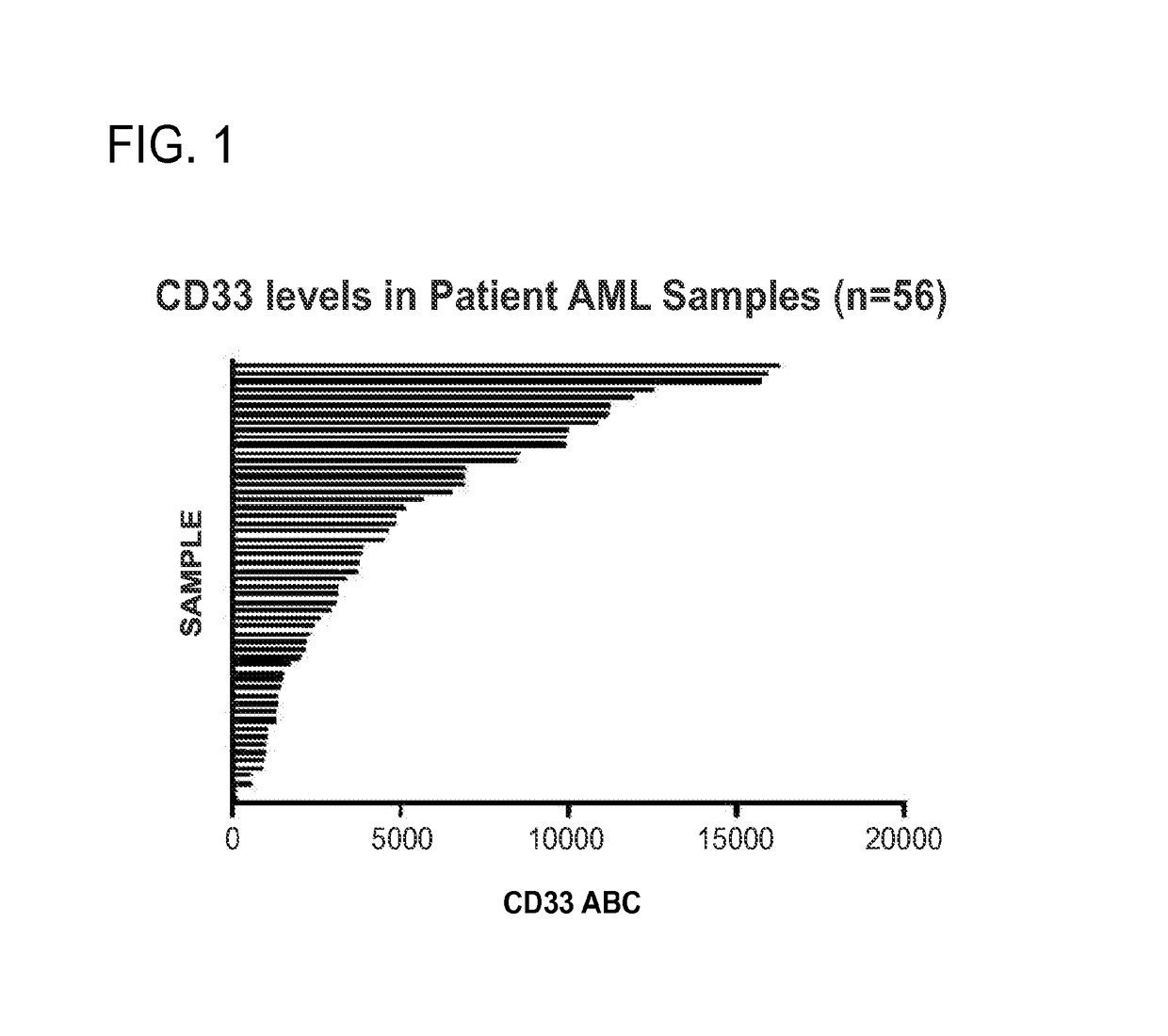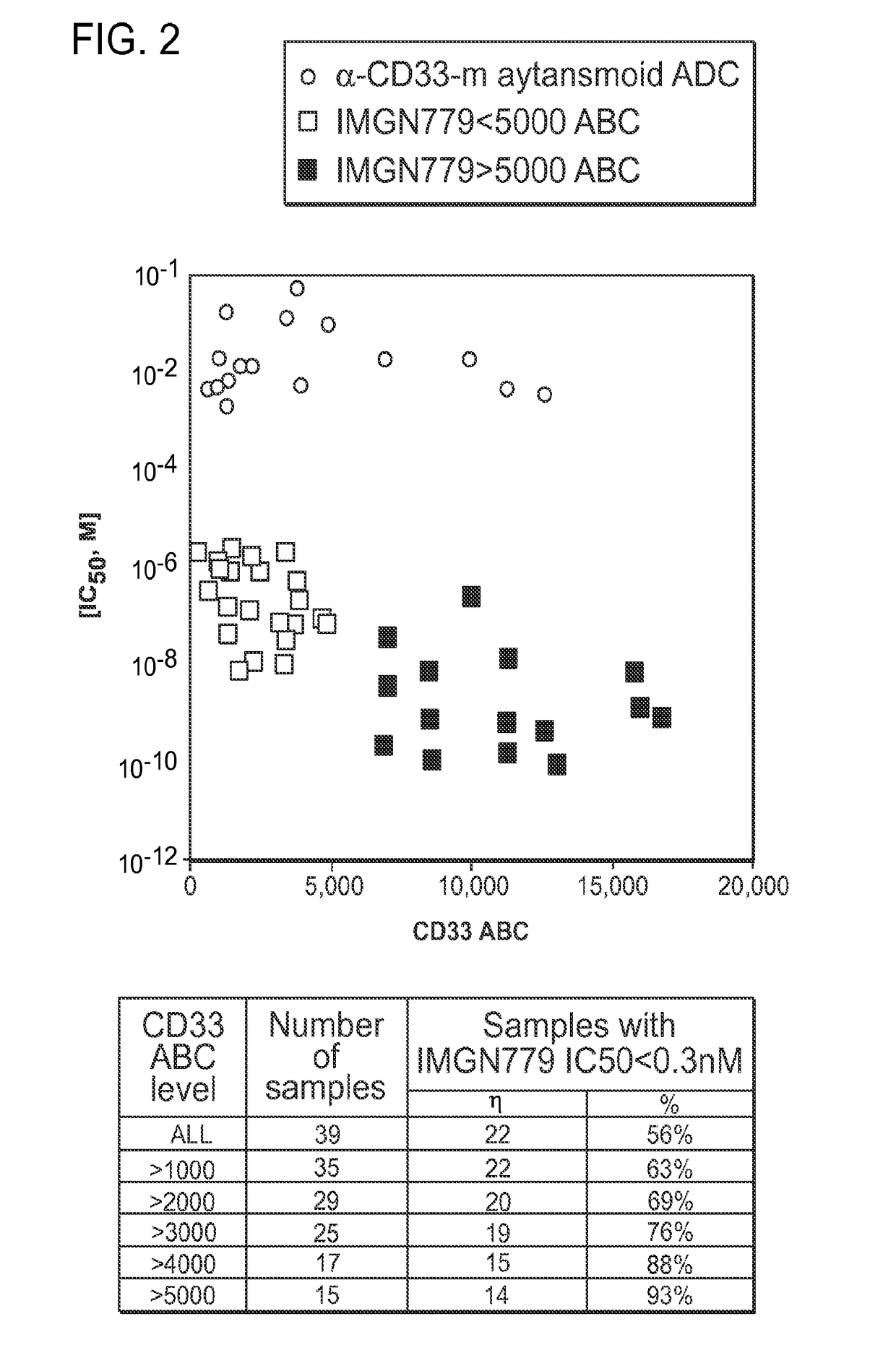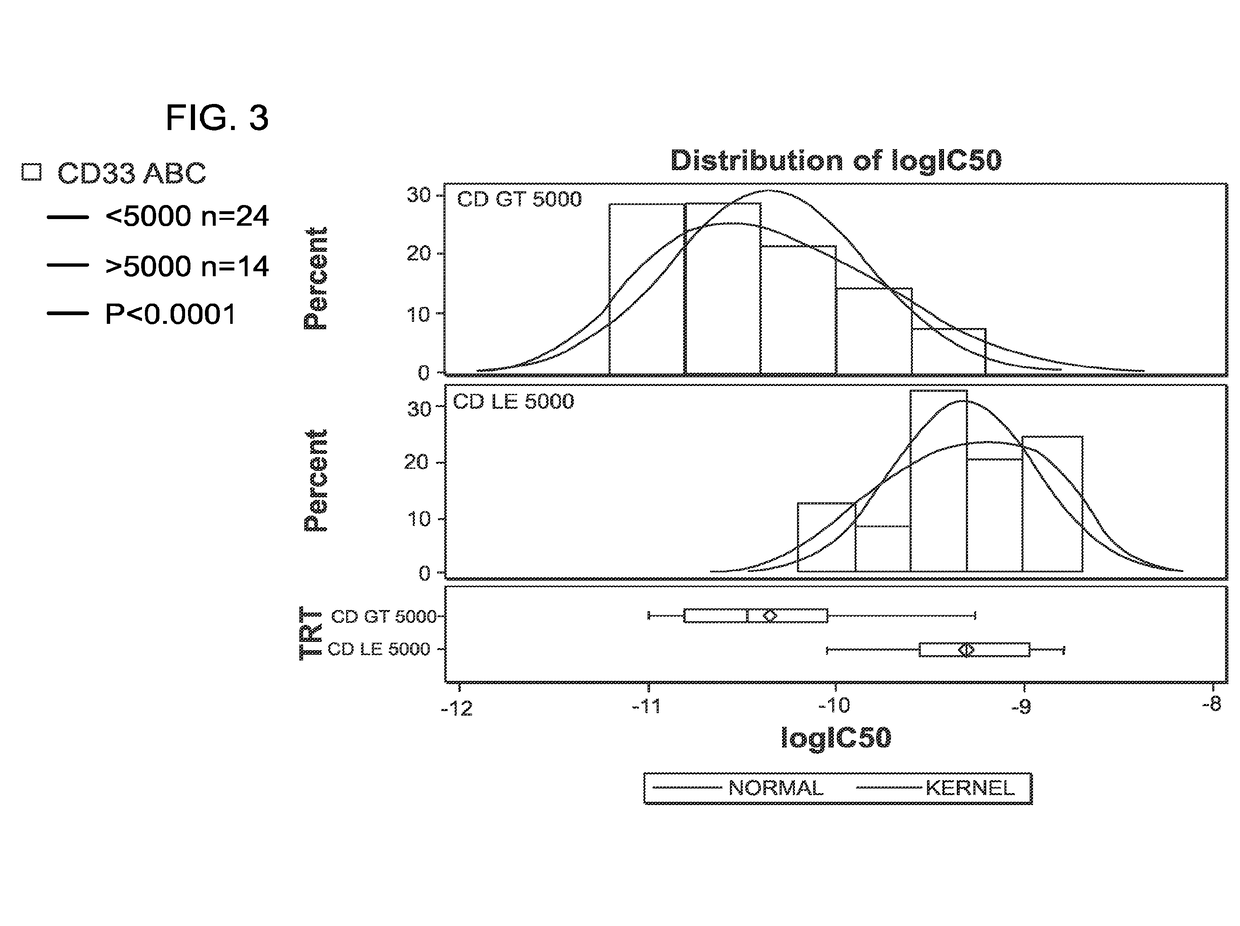Methods for characterizing and treating acute myeloid leukemia
a myeloid leukemia and acute myeloid leukemia technology, applied in the field of acute myeloid leukemia characterization and treatment, can solve the problems of many acute myeloid leukemia (aml) patients not achieving complete remission, and achieve the effect of reducing the probability of developing a disorder
- Summary
- Abstract
- Description
- Claims
- Application Information
AI Technical Summary
Benefits of technology
Problems solved by technology
Method used
Image
Examples
example 1
IMGN779 Exhibited CD33-Specific In Vitro Cytotoxicity Against Primary Patient AML Cells
[0179]CD33 levels and P-glycoprotein (Pgp) activity were measured by flow cytometry. Cytotoxic potencies of DGN462 and IMGN779 in AML cell lines were evaluated using continuous exposure up to 7 days, with WST-8 viability staining Potency of IMGN779 against primary AML samples and normal bone marrow (NBM) was evaluated using colony formation assays after 24-hour exposure and after long term liquid culture to assess the potency in leukemic progenitors and leukemic stem cells, respectively. The antitumor activity of IMGN779 was assessed in SCID mice bearing subcutaneous HL60 / QC and EOL-1 xenografts.
[0180]Pharmacokinetic parameters in CD-1 mice were determined from plasma concentrations of IMGN779 conjugate and its total Z4681A antibody component at various time points, measured by ELISA. The bioactivity of a subset of these plasma samples was confirmed by assay of cytotoxic potency against AML cells....
example 2
CD33 is Expressed on Primary Patient AML Cells
[0183]CD33 expression on primary patient AML cells was measured using a calibrated flow cytometry method (FIG. 1). AML samples were stained with a fluorescent-tagged anti-CD33 antibody and compared with the fluorescent signal of a calibration curve using fluorescent-tagged beads at varying label to bead ratio, allowing the total number of CD33 antibodies bound per AML cell (ABC value) to be determined CD33 is expressed at relatively low levels in patient AML cells, with maximal expression of approximately 17,000 antigens per cell (ABC).
example 3
IMGN779 Demonstrates Highly Potent and CD33 Specific In Vitro Cytotoxicity Against Primary Patient AML Cells
[0184]The cytotoxic activity of IMGN779 was assessed against a panel of primary patient AML cells in colony-forming assays after 24 hour conjugate exposure (FIG. 2).
[0185]The activity of a CD33-targeting maytansinoid ADC (using the same antibody in IMGN779) was assessed on a subset of these samples. IMGN779 was highly active against patient AML cells with IC50 values ranging from 11 pM to 1.6 nM, with a dependence on CD33 expression level. CD33 levels ranged from ˜200 to 16,000 antigens per cell. In contrast, the CD33-targeting maytansinoid ADC was between 60 to 9,000-fold less active than IMGN779, with no dependence on CD33 expression level. FIG. 2 shows the in vitro potency of IMGN779 compared with a CD33-targeting maytansinoid ADC against patient AML cells.
[0186]Using an IC50 cutoff of 0.3 nM to define a high level of sensitivity (500-fold lower than the median IC50 of the ...
PUM
| Property | Measurement | Unit |
|---|---|---|
| temperatures | aaaaa | aaaaa |
| temperatures | aaaaa | aaaaa |
| temperatures | aaaaa | aaaaa |
Abstract
Description
Claims
Application Information
 Login to View More
Login to View More - R&D
- Intellectual Property
- Life Sciences
- Materials
- Tech Scout
- Unparalleled Data Quality
- Higher Quality Content
- 60% Fewer Hallucinations
Browse by: Latest US Patents, China's latest patents, Technical Efficacy Thesaurus, Application Domain, Technology Topic, Popular Technical Reports.
© 2025 PatSnap. All rights reserved.Legal|Privacy policy|Modern Slavery Act Transparency Statement|Sitemap|About US| Contact US: help@patsnap.com



